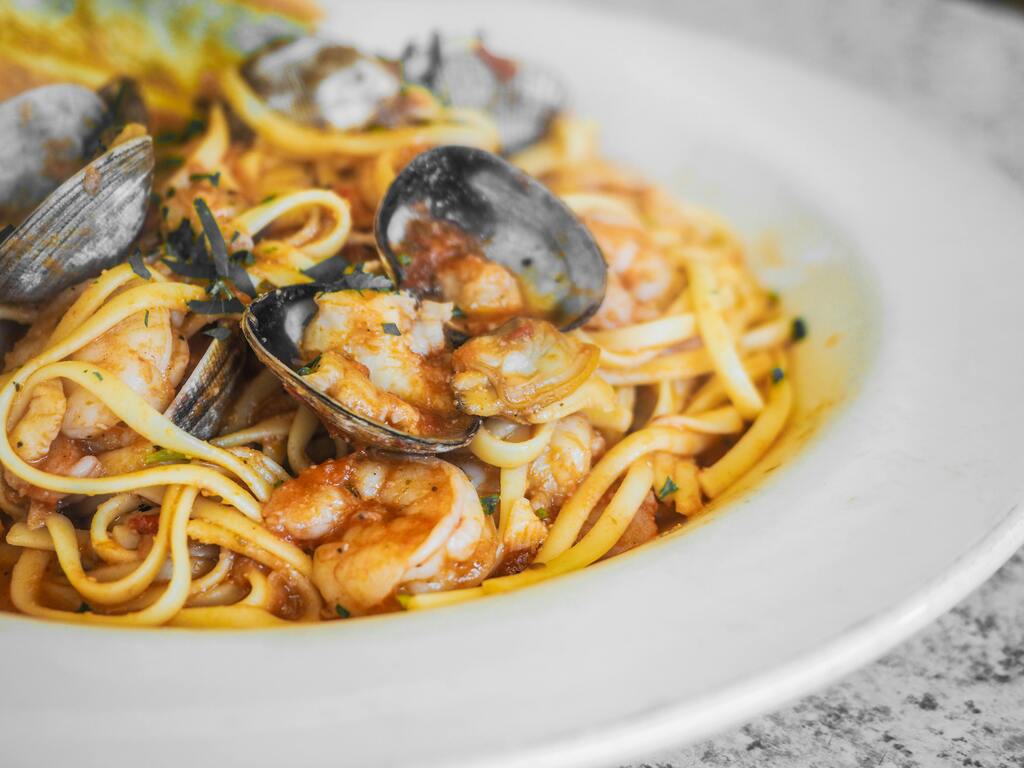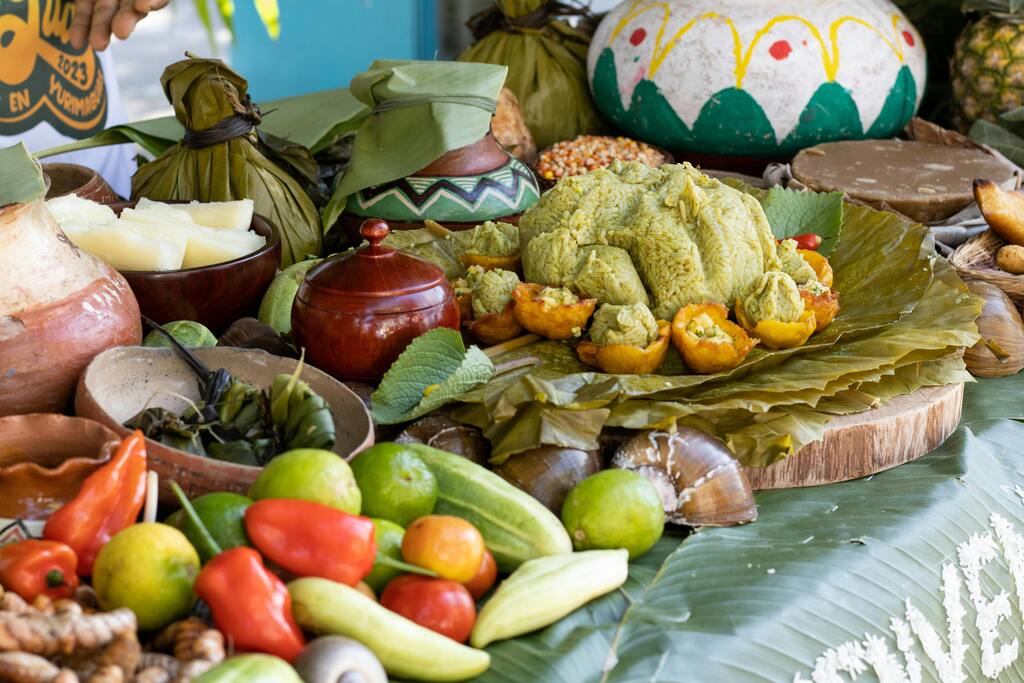

Portuguese food is an experience that celebrates the country’s way of life, with an explosion of flavours and culture at each turn. Just take a homely sardine festa in summer when the scent of freshly grilled fish fills the air, or the warmth of a steaming caldo verde soup as it slips down your throat.
This run-down of famous Portuguese foods introduces the typical Portuguese food you need to eat (or drink) at least once in your lifetime.
Bacalhau com Natas: The king of portuguese cuisine
This beloved national dish revolves around Portugal’s timeless tradition of salt cod. Bacalhau, salted and dried codfish, is a cornerstone of Portuguese cuisine and a true national symbol. With over 365 recipes, one for each day of the year, Bacalhau com natas remains a favorite.
This iconic Portuguese dish combines tender codfish flakes, thinly sliced potatoes, and onions in a rich, creamy sauce, baked until golden and bubbly. A favorite in restaurants and family dinners, Bacalhau com natas is a must-try, especially in Lisbon or Porto, where its perfect creamy-savory balance truly stands out.
Caldo Verde: Portugal’s comforting traditional soup
A bowl of caldo verde is not just a soup, it’s a warm embrace. This hearty dish from northern Portugal combines kale, potatoes, garlic, and slices of chorizo in a lightly smoky broth.
For generations, caldo verde has been served hot with a side of fresh crusty bread. Traditionally served and eaten hot, caldo verde is a food staple of Portugal. You can find it everywhere, from Portuguese festivals to the family table.
This iconic soup embodies all that’s best about traditional Portuguese dishes—fresh, unpretentious and immensely gratifying. Enjoy a bowl in a Porto tavern or the countryside to warm your heart, soul, and stomach with an authentic taste of local tradition.
Pastéis de Nata: The most iconic portuguese dessert
A trip to Portugal is incomplete without a few pastéis de nata. As one of the country’s finest desserts, these sumptuous treats are an absolute must for anyone planning a trip.
They feature a flaky pastry crust filled with silky smooth custard, topped with a sprinkle of cinnamon. Paired with a traditional side of coffee, they offer the perfect indulgence.
Though seemingly simple, the best versions of this dessert reveal why it’s so exceptional. For the ultimate treat, visit the famous Pastéis de Belém bakery in Lisbon for an authentic taste of sweetness.

Piri-Piri Chicken: A spicy and flavorful favorite
Piri-piri chicken is a fiery flavour bomb. This popular Portuguese dish features grilled chicken marinated in a garlicky lemon sauce and coated with spicy piri-piri chili sauce, offering a tangy, smoky taste with tender, juicy meat.
The background of this dish is as audacious as its name. Rooted in Portugal’s colonial past and African subtropical influences, piri-piri chicken blends culinary traditions into a flavorful explosion. If you enjoy a touch of spice, this is a must-try from the Portuguese food list.
For the ultimate taste experience, look for a piri-piri chicken restaurant in the Algarve or in Lisbon, where this divine dish is cooked following age-old recipes. A simple and healthy chick dish not to skip on your abroad Portugal trip.
Feijoada: Portugal’s hearty and delicious stew
Hearty and warming, Feijoada is a true taste of Portugal—a stew of beans with beef and pork, though modern vegetarian versions are also available. A great comfort food, it combines well with smoky sausages like chouriço, and even red wine or Port.
This classic stew is prepared throughout Portugal with regional variations—thicker with black pudding in the north and enriched with more herbs and vegetables in the south. Whether in Lisbon, the Algarve or the Douro Valley, this dish symbolises the heart of Portuguese peasant cooking.
This dish is best enjoyed with crusty bread to soak up the sauce or a bed of fluffy white rice to capture its rich flavor. Whether served in a rustic country tasca or at a family gathering, feijoada nourishes both body and soul.
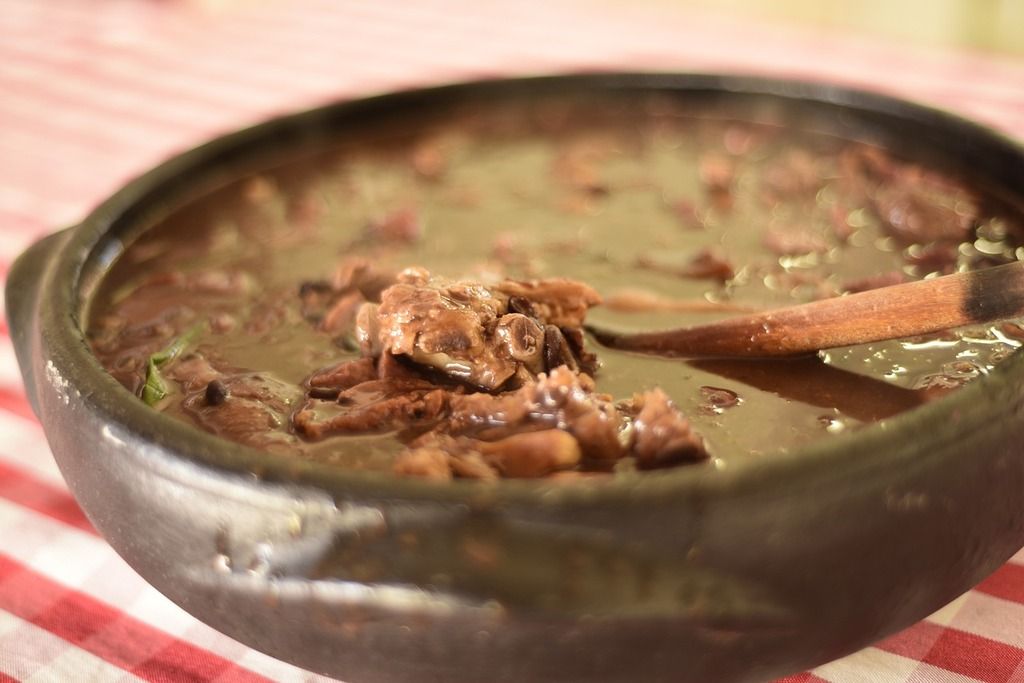
Arroz de Marisco: A seafood lover’s dream dish
Arroz de Marisco is the perfect dish for seafood fans. Prawns, clams, mussels – you name it, this hearty rice dish has it. An irresistible creamy texture, similar to risotto, brings out the true taste of the sea in every bite. Seasoned with herbs, white wine and a little bit of tomato, this Portuguese dry rice always delivers both salinity and acidity on the palate.
Taste this dish in the seasides of Portugal, where the seafood is freshest. For the most authentic version, head to Aveiro, Setúbal. The Portuguese restaurants along the seaside are adept at creating this dish. Enjoy it along with some white wine. Whether at an elaborate Portuguese seafood restaurant by the coastline or a cosy Portuguese pub, Arroz de Marisco is a dish which is the taste of the Portuguese coastline.
Francesinha: Porto’s legendary sandwich
The francesinha, proudly originating in Porto, is a sandwich like no other. Thick bread slices hold layers of ham, cured sausage, and steak, topped with melted cheese and drenched in a spiced tomato and beer sauce. Served with a knife, fork, crispy fries, and a cold beer, its appeal is undeniable.
For the ultimate experience, add an egg on top and pair it with a beer. The francesinha is perfect for satisfying a serious craving with its indulgent, calorie-packed goodness—and it’s clear why locals adore it.
You simply must try this indulgent dish when visiting Porto. Head to the traditional spots for guaranteed authenticity, such as Café Santiago, or the more modern take, Cervejaria Brasão. Every place has, of course, a secret recipe for that famous sauce, so do your own taste test.
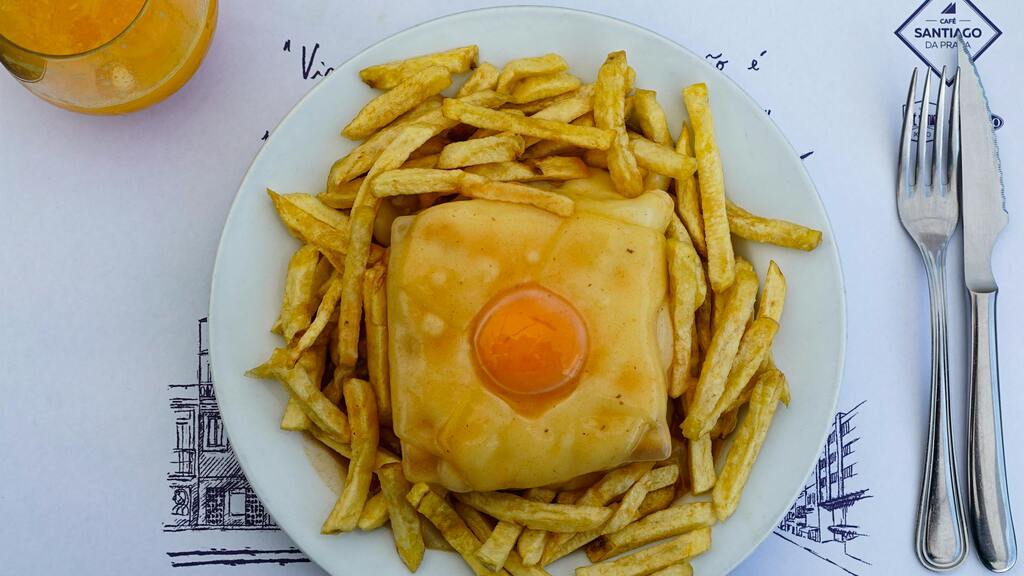
Açorda: A simple yet flavorful bread-based dish
Açorda is one of those simple dishes that have been eaten by the Portuguese for generations. Making use of crusty old loaves of bread this ‘stew’ brings nourishment and comfort in equal measures. The bread is softened and cooked until thick, then enriched with olive oil, garlic, and plenty of coriander, topped with a perfeclty poached egg.
The dish is a delightful concoction, born of practicality (think leftover bread). While its basic components are what makes it so tasty, there are regional incarnations as well. In Portugal’s Alentejo region, where açorda reigns supreme, the dish is sometimes prepared with shrimp or salt cod, adding a briny, nautical touch to its earthy flavors.
For the ultimate açorda experience, seek out a cozy hole-in-the-wall or a corner taverna, where generations of families craft their cherished recipes passed down through memory and tradition.
Portuguese grilled sardines: A taste of summer in Portugal
Summer in Portugal means the smell of grilled sardines in the air. These tasty little fish are salted, brushed with oil, and grilled over an open flame until the skin is charred and the meat juicy.
To experience the best taste of Portugal sardines, make your way to a seaside town such as Cascais or Nazaré where you can try as many as you like. Catch them at the local market stall or laid out on a plate in a seaside restaurant.
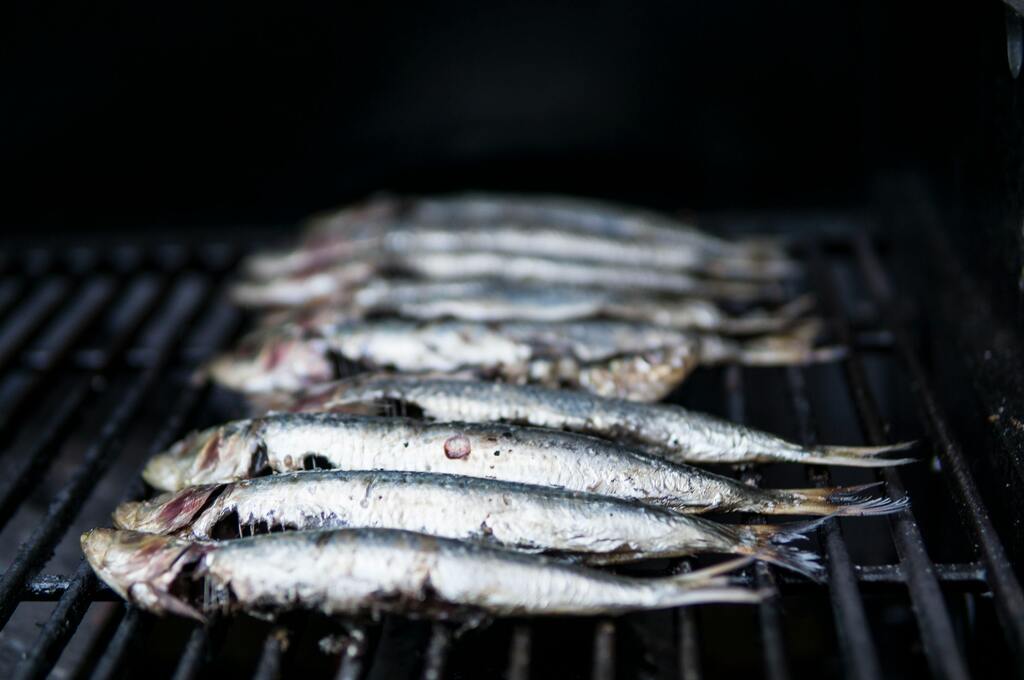
Cataplana: A traditional seafood feast
If you love seafood, you’ll love cataplana. This traditional dish from the Algarve is prepared in the copper cataplana pot that is the source of its name. The pot was first introduced to the region by the Moors, who, with the Romans and Greeks before them, greatly influenced the foods and flavours of the Algarve.
The resultant seafood stew is bursting with the flavours of the country’s coast and is a wonderful dish for seafood aficionados. Cataplana is best enjoyed in seaside towns of Algarve like Lagos or Tavira.
Cataplana is not just a meal, but an excursion one must experience in Algarve. Many tourists recommend pairing this dish with crusty bread or a chilled glass of Vinho Verde. It’s the perfect way to savor Portugal’s bold, generous flavors and the comforting, homemade essence of its cuisine.
Arroz de Pato: Portugal’s rich and savory duck rice
Duck rice, a beloved Portuguese comfort dish, combines shredded duck and flavorful rice, baked to form a crispy crust. Slow-cooked with bay leaves and a splash of white wine, this hearty meal embodies the warmth of Portuguese home cooking. What sets it off is the crispy chorizo on top, adding texture to the smooth rice.
Deep, rich and supremely savoury, try arroz de pato and you’ll never look back. It is a staple of the Portuguese home and a dish that can be eaten in any traditional Portuguese restaurant.
Savor this classic Portuguese dish in traditional restaurants or homes in cities like Lisbon or Coimbra, where cooks use a gradual steaming process to create a perfect rice crust. Pair it with a glass of red wine to elevate its flavors, as both the wine and the dish capture the essence of Portuguese culinary tradition.
Port Wine and Vinho Verde: Portugal’s must-try beverages
Portugal is an excellent wine destination. If you’re a wine lover, don’t miss sampling Portuguese Port wine and Vinho Verde. Port wine offers rich, sweet flavors with notes of dried fruit, caramel, and spices. It is best when sipped and pairs well with chocolate or strong cheeses.
Vinho Verde, by comparison, is light and crisp — essentially a young wine, slightly sparkling. Originating from northern Portugal, Vinho Verde is perfect for a warm day, offering refreshing citrus and green apple notes.
To try either of these wines at the source, visit a vineyard in the Douro Valley or Minho. Many wine bars in cities like Porto or Lisbon offer wine tastings, allowing you to drink these great Portuguese beverages. Whether you like the classy Port or the zesty Vinho Verde, you will not forget it. The wine culture is a truly unforgettable part of traditional Portuguese food heritage.
While savoring the rich flavors of Portuguese food, don’t miss the chance to explore the country’s incredible sights—here’s a guide to the 10 places you should see in Portugal.
Bolo de Mel and Queijadas: Sweet endings
Portuguese desserts are the perfect way to end any meal, with bolo de mel and queijadas being among the country’s finest sweets. Bolo de Mel, Madeira’s famous honey cake, is dense, moist and perfectly spiced making it all but impossible to resist.
The Sintra-born queijadas, sweet, creamy cheese pastries, offer a lighter reprieve from dessert. A flaky crust with a decadently sweet custard filling makes it a local and visitor favourite all the same.
Pair them with a strong cup of coffee or a glass of port to complete your authentic Portuguese culinary experience. Whether in a quaint cafe or a lively bakery, bolo de mel and queijadas taste just like food in Portugal.

Why Portuguese food is a feast for all senses
Portugal meals are full of the taste of tried-and-true Portuguese dishes, with iconic desserts and wine sweetening the colourful culinary scene. Every plate lingers with flavours of the past, fusing fresh ingredients with time-honoured recipes.
Whether you like it salty or sweet, classic or experimental, Portuguese traditional food has you covered. Wondering what to eat in Portugal and hungry to try it all? Do it by planning a 5-day organized tour in Portugal all about exploring the tastes and culture of this incredible country.

